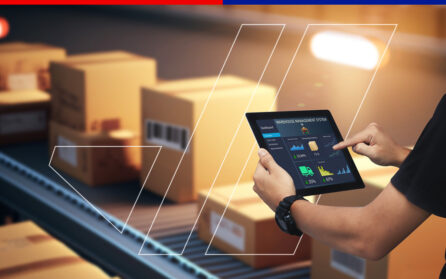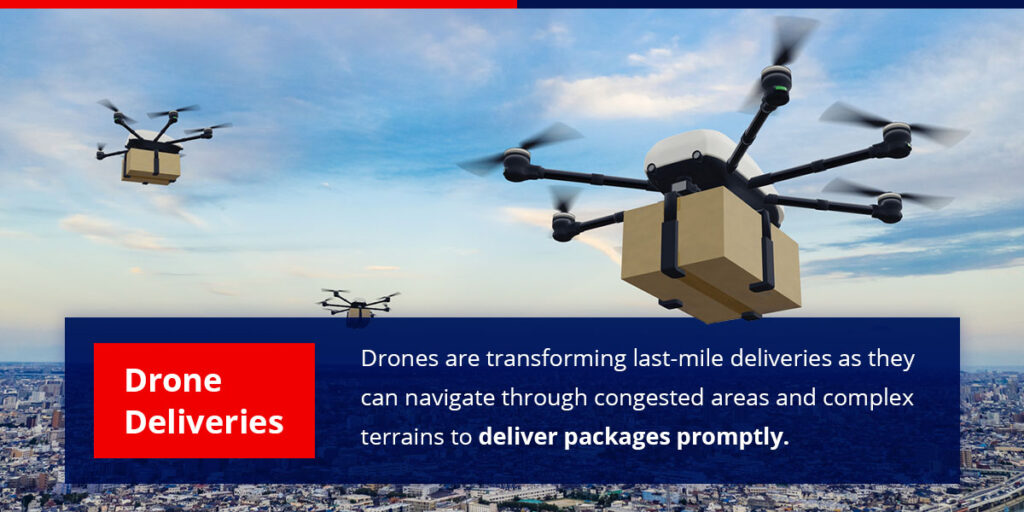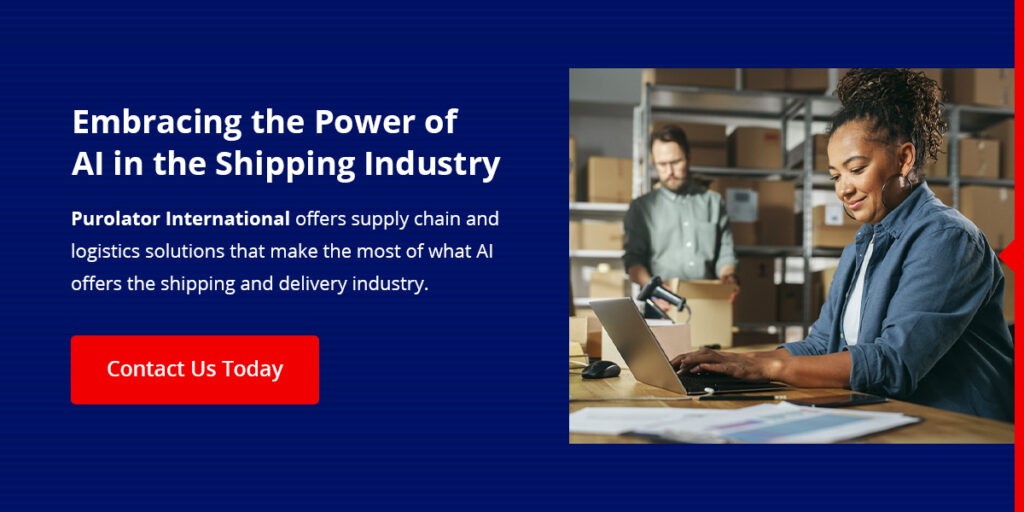Blog
The Future Impact of AI on the Shipping Industry

Artificial intelligence (AI) can streamline operations in shipping, with significant applications including automated processing and real-time analytics. Machine learning uses an organization’s historical and real-time data to help mitigate risks and serves as a helpful tool that aids in decision-making processes. As the use of artificial intelligence in logistics grows, it becomes more imperative than ever before that organizations adopt these tools to optimize their operations to keep a competitive edge.
AI is a valuable tool in most industries and its potential to become more is hard to ignore. Staying up-to-date on the current state of affairs as the technology grows and develops allows organizations to adopt more AI tools into their operations, especially in shipping and delivery.
- Current State of the Shipping Industry
- AI Applications in Delivery
- Benefits of AI in Shipping
- Challenges of AI in Shipping
- Embracing the Power of AI in the Shipping Industry
Current State of the Shipping Industry
The shipping industry is recovering from disruptions and delays experienced during the pandemic, but it’s still experiencing instability. Companies can expect backlogs and delays, container shortages and fluctuating prices. Integrating AI technology can increase efficiency and visibility to help shipping businesses overcome industry challenges.
AI complements human capabilities while eliminating the need for them to engage in routine work. This benefit makes AI a vital tool at every stage of the delivery process. Globally, over 77% of companies are either already using or in the process of planning their AI integration. Technological trends promise to showcase the positive impact of AI in the shipping industry in the long run, even if the majority of immediate integrations appear to be small-scale.
AI Applications in Delivery
We are already seeing several significant benefits of using artificial intelligence in logistics, from optimizing how inventory is packed into delivery vehicles to mapping tools for delivery drivers. These functions work together to enhance the supply chain’s efficiency, safety and customer experience.
Delivery Apps
Well-known in the eCommerce industry, these apps directly benefit both the organization and the customer base. They optimize deliveries by offering the quickest and most cost-effective routes for delivery vehicles. With constant weather forecasts and traffic updates, route adjustments are made in real-time to ensure timely deliveries. Finally, applications like these allow customers to track their orders and receive accurate delivery estimates, improving communication and transparency across all channels.

Drone Deliveries
Drones are transforming last-mile deliveries as they can navigate through congested areas and complex terrains to deliver packages promptly. With the help of AI algorithms, drones can avoid collisions, detect obstacles and adapt to changing weather conditions. Corporations like Amazon and Walmart are already using autonomous delivery drones, incorporating this eco-friendly, cost-effective, fast delivery service into their offering.
Chatbot Integration
Chatbots integrated into customer service channels provide users instant gratification by responding to queries, offering tracking capabilities and providing further real-time assistance, reducing human intervention. These systems can also schedule or reschedule deliveries following customer requests, which provides additional convenience for the customer and logistics team.
Optical Character Recognition
Optical character recognition (OCR) increases efficiency in data entry by extracting data from images for further processing. It can also detect dimensions, allowing organizations to offer more accurate costing estimates. OCR conveniently reduces the risk of errors, automates the data-entry process, frees up employees to focus on more value-added tasks and improves overall delivery efficiency for organizations.
Benefits of AI in Shipping
AI already delivers several benefits in logistics, from cost reduction to faster turnaround times and better risk mitigation. By incorporating Internet of Things (IoT) technologies, organizations optimize their AI use. IoT devices communicate with each other, exchanging and collecting information that can better vehicle usage, warehousing and tracking deliveries. Here are some of the benefits of integrating AI:
- Predictive maintenance: AI algorithms analyze vehicle sensor data to identify potential issues and patterns to help avoid fleet downtime.
- Intelligent warehouse systems: Warehouses optimize operations by leaning on machine learning algorithms that can automate picking systems to streamline inventory management.
- Efficient scaling: AI is growing fast enough to adapt to the demands of the shipping industry, whether it is accommodating increasing order numbers or expanding delivery networks without a hitch.
- Intelligent traffic management: Predicting congestion can improve traffic flow and speed up transportation. This benefit is particularly applicable to the less-than-truckload (LTL) carriers.
- Reducing overheads: Route optimization, predictive maintenance and resource allocation, AI can help reduce operational costs. It can also maximize the use of transportation assets while lowering expenses by offering efficient cargo loading and unloading strategies.
- Better analytics: Thanks to transparency in analytics and valuable insights from AI, stakeholders are empowered to make data-driven decisions for inventory management.
- Performance forecasting: Historical data can help professionals better understand their vessels’ degradation rate, creating the opportunity to schedule maintenance or upgrade delivery systems or vehicles promptly.
- Safety and compliance: AI systems can monitor delivery vehicles or shipping containers and, in the case of vehicles, enforce safety protocols. Monitoring driver behavior and ensuring they adhere to regulations can reduce accidents and legal liabilities.
Challenges of AI in Shipping
AI brings significant advantages to logistics and shipping organizations. To integrate technology into operations successfully, stakeholders must address the challenges that come with AI. Overcoming these obstacles can allow them to use AI in their business to its full potential. A few of the challenges include:
- Job replacement: Commonly seen across all industries is a fear that AI will replace jobs. Organizations are responsible for educating employees on using AI and how it complements them instead of removing their core functions.
- Adaptation costs: The initial investment can be high, which is particularly challenging for smaller companies. However, you can break up these costs over time by adopting new technologies sparingly or on a set schedule. The return on investment will be well worth it.
- Cybersecurity: This challenge especially applies to AI deliveries. Many people have concerns about drone deliveries beyond the visual line of sight. Incorporating IoT devices to monitor areas and real-time data processing to mitigate potential cyberattacks and theft can boost cybersecurity.
Embracing the Power of AI in the Shipping Industry
As AI grows, it may bypass the need for a continuous feed of instructions to aid its predictions and functionality, allowing technology to lean into automation more. This growth will increase many stakeholders’ trust in the technology, contributing to a solid and efficient network build while freeing up valuable resources for organizations to reinvest into inventory, operations and employees.
Purolator International offers supply chain and logistics solutions that make the most of what AI offers the shipping and delivery industry. A leader in cross-border shipping, we provide on-time deliveries, reputable customer service and flexible solutions that meet your organizational needs. Contact us today to find out how we can assist with your shipping needs.
 Chat
Chat